The dilemma of Constant Force in Watchmaking
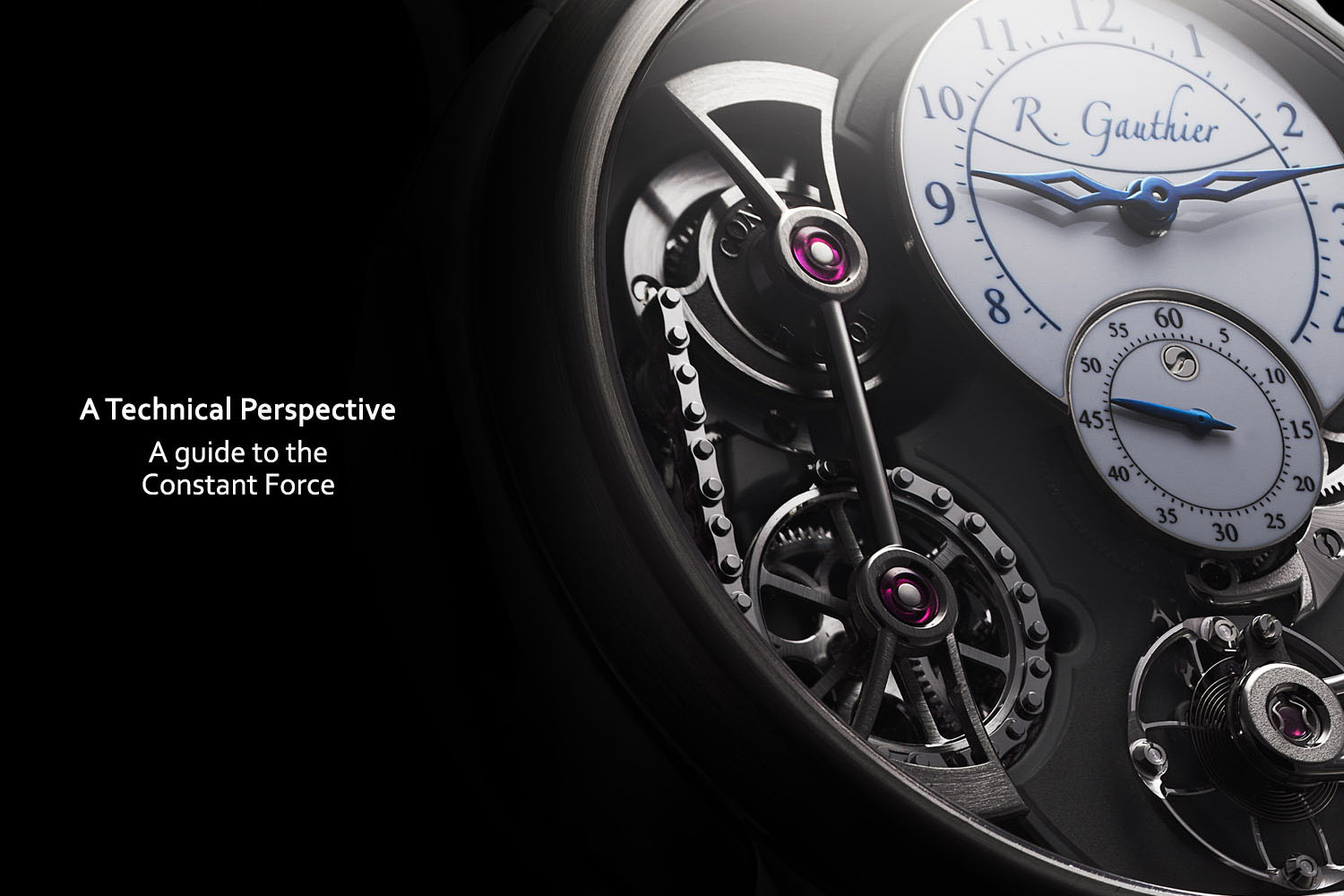
Constant force is a holy grail of watchmaking and chronometry. The varying driving force delivered to the regulating organ of watches affects their rate, because balance wheels are not perfectly isochronous – isochronous means that the period of oscillation is independent of the amplitude of oscillation. Modern barrels and the Swiss lever escapement offer satisfactory regularity. Still, in their ongoing search for precision, watchmakers are showing renewed interest in taming power even further. Here is our technical guide to the complex concept of constant force.
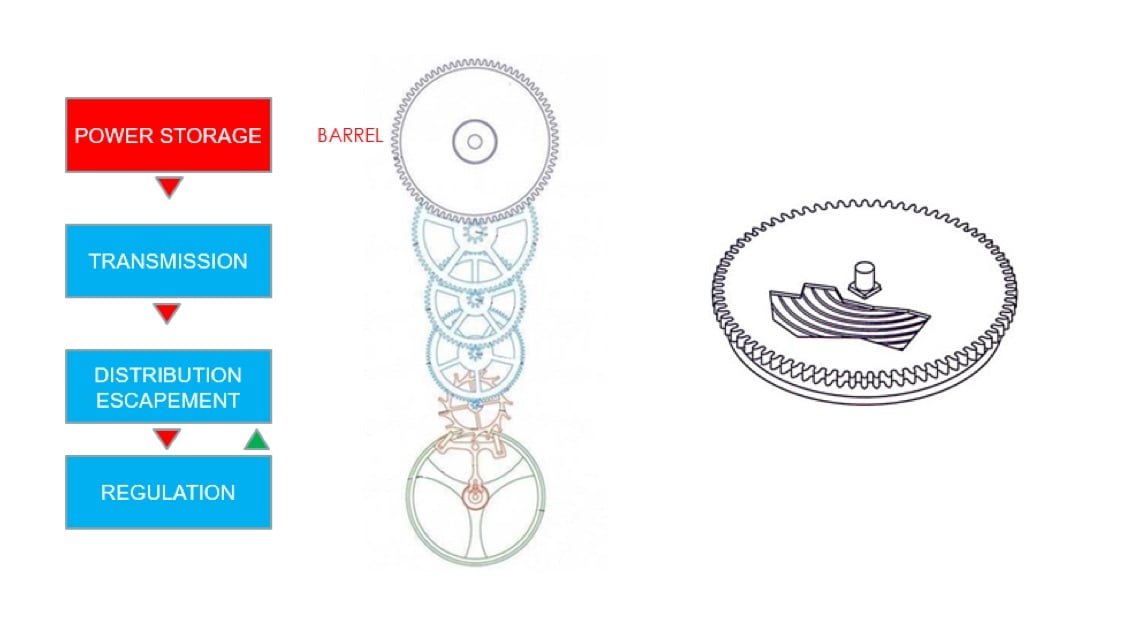
The barrel is the device that stores energy in a watch movement. It contains the mainspring coiled around the barrel arbor, which is put under tension to power the movement. The force delivered by the barrel is irregular. Strong torque is provided when it is fully wound, then it slowly wanes throughout the power reserve duration. This affects the rate of watches because balance wheels are not perfectly isochronous. The period of oscillation, hence the rate of the watch, is affected by the variation of its driving force, which led watchmakers to design mechanisms aiming at equalizing the force of the mainspring.
Fusée-and-chain
Dating from the 15th century, the fusée was used in clocks and pocket watches. It is one of the earliest solutions to the problem of the lack of isochronism together with the stack-freed. The latter is a cam with a spring pressing against it to compensate the mainspring power with an opposing force – a rather counter-intuitive device given that watchmakers always try to minimize friction.
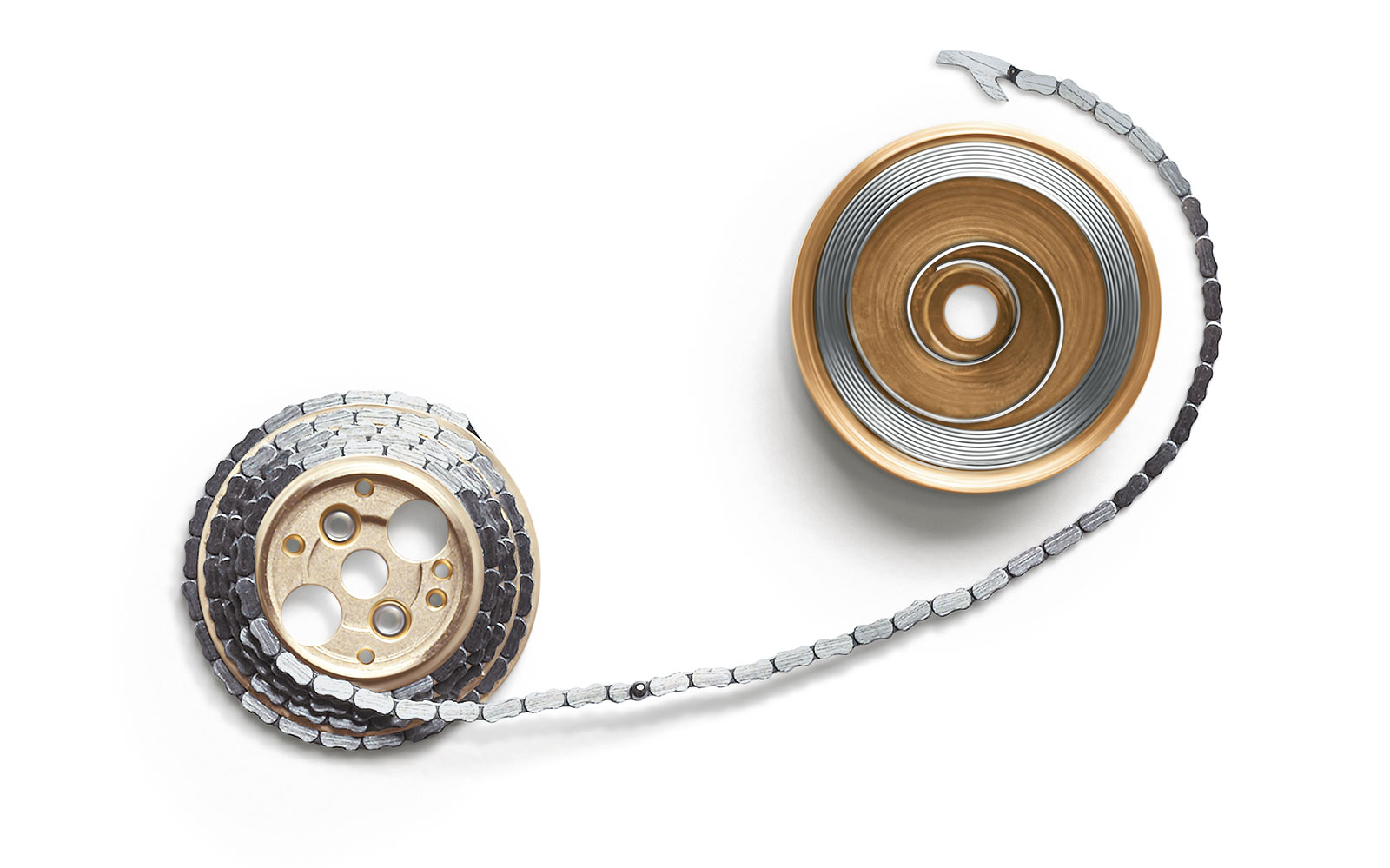
Fusée and chain mechanism by A. Lange & Sohne. Richard Lange “Pour le mérite”.
A fusée consists of a cone-shape pulley, linked to a chain coiled round the barrel. The fusée features a spiral thread to receive the chain. Thanks to the increasing circumference of the thread, the diminishing force of the mainspring is compensated (very much like the gearing of a bicycle). As the mainspring unwinds, the chain rolls on the barrel and off the fusée. The increasing leverage of the fusée compensates for the waning torque of the barrel.
Close-up of the fusée and chain of the Zenith Academy George Favre-Jacot released to celebrate the 150th anniversary of the birth of the founder of the Le Locle manufacture.
Fusée and chain mechanisms are complex to manufacture, difficult to adjust and thus, rather expensive. To give an idea of what their creation entails, the chain in the Richard Lange Pour Le Mérite consists of 636 parts – and has a cross section of only 0.6mm by 0.3mm. They also require a lot of space. With the improvements of the escapement (specifically the Swiss lever escapement) and modern barrels delivering fairly consistent power, the fusée and chain were no longer a necessity. This explains why these are rarely seen in wristwatches and were almost entirely abandoned in the 20th century. Still, in their relentless search for chronometric perfection, and as an evidence of superb craftsmanship and manufacturing skills, several watchmakers have used such mechanism in recent years – in particular Breguet, Zenith, Lange & Söhne, Cabestan, Romain Gauthier and De Witt.
The breathtaking Romain Gauthier Logical One Natural Titanium features an evolution of the fusée and chain. A slow rotating snail cam replaces the fusée and allows for the transmission of force in a straight line, without torsion of the chain whose links feature low-friction, hard-wearing synthetic rubies
Stop-works – barrel / spring improvements
A stop-work is a device to prevent overwinding of the barrel, i.e. stopping the winding before the barrel spring is completely coiled around the arbor.
A maltese cross over the barrel of the Ferdinand Berthoud
One of the most common stop works in watches is the Maltese cross. This device is made of a gear in the form of a cross with several arms – all with a concave end except for one – working with another wheel with one finger fixed on the barrel arbor. One arm with a convex end prevents the arbor from rotating when it encounters the finger piece. The Maltese cross will also stop the running of the watch before the barrel unwinds completely. It therefore allows a certain number of turns of the barrel only and part of the development of the mainspring is used, that corresponding to its optimum operating range, avoiding high and low torque.
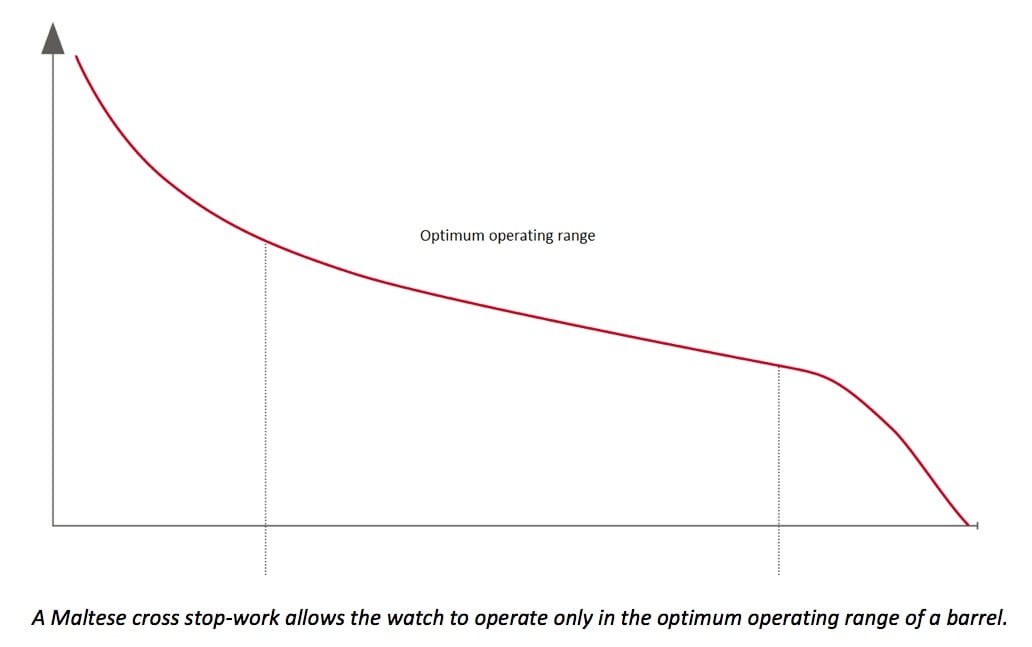
The improvement of barrels and the innovations in spring technology made stop-works mostly unnecessary and these are seldom used today. Still, the Lange & Söhne Datograph L952.1 caliber is equipped with a stop work; the IWC 5000 caliber presented in 2000 has a “virtual” power reserve of 8.5 days but it stops after 7 days if not wound.
Watchmakers also keep working on optimizing the designs of barrels and springs, using barrels connected in series, working on the gear ratio of unwinding barrels to ensure torque is as constant as possible, developing new alloys to eventually replace the widely used Nivaflexâ or, implementing new lubrication types. In the quest for improving the efficiency of barrels, Cartier has housed in its ID Two concept watch two double level barrels, hence 4 springs releasing power serially. The springs are made of glass micro fiber and not metal, offering highly elastic properties. Their design also allows for a more constant flow of energy as they unwind. Cartier also worked to reduce friction within the barrel substituting the traditional lubrication with an ultra-thin smooth polymer coating on the spring. Cartier claims that these innovations allow 30% more energy from the available volume inside the barrels.
The two duo-level barrels of the Cartier ID Two housing 4 innovative fiber glass springs.
Remontoire
F.P. Journe, Bi-axial High Performance escapement, Dead second and Remontoir d’égalité (blade spring) mechanism (left). Lange & Söhne remontoire (right) of the Lange 31. With its coiled spring, it acts like a buffer to smooth the force supplied by the mainspring over 31 days of power reserve.
A remontoire (or remontoir in French) is another type of constant force device consisting of a secondary spring (a blade or coiled spring) to power the escapement. It is rewound periodically by the mainspring and isolates the escapement and oscillator from the varying torque of the barrel. The clockmaker Jost Bürgi (1552-1632) used remontoires to improve the accuracy of his clocks to time the passing of stars. But like the fusée and chain, with the technical advances of horology, the complex remontoires slowly fell into oblivion. F.P. Journe lists George Daniels, Anthony Randall and himself as the few watchmakers to have crafted such devices in the 20th century. But remontoires also did their comeback, Journe being a precursor with his elegant Remontoir d’égalité. Several manufacturers have followed suit and equipped watches with remontoire mechanisms in recent years: Lange & Söhne, Lang & Heyne, Christophe Claret, Arnold & Son or more recently Grönefeld.
The beautiful Gronefeld 1941 remontoire releases its energy over 8 seconds while most similar devices work with 1-second cycles.
Constant force escapements
One of the most sophisticated solutions to the waning power supplied by barrels is probably to work on the escapement itself. Among the early research in this field, British horologist Charles Haley was granted a patent N° 2132 in 1796 for a constant force escapement; the great Breguet registered a patent for a constant-force escapement for clocks in 1798.
More recently, Girard-Perregaux unveiled a breakthrough providing a revolutionary solution to improve isochronism in wristwatches – the Constant Escapement. The idea of Nicolas Déhon dates from the late 1990s when he started to elaborate the first ELF (Echappement à Lame Flambée) design and was brought to life a few years later thanks to modern technology and silicon. Its principle is based on the elastic and bi-stable properties of a buckled blade. This silicon component, 14-micron thick, acts like an energy micro-storage units to deliver constant impulses of energy to the oscillator. The blades flips from one position to the other after storing then freeing a constant amount of energy (less than one millijoule).
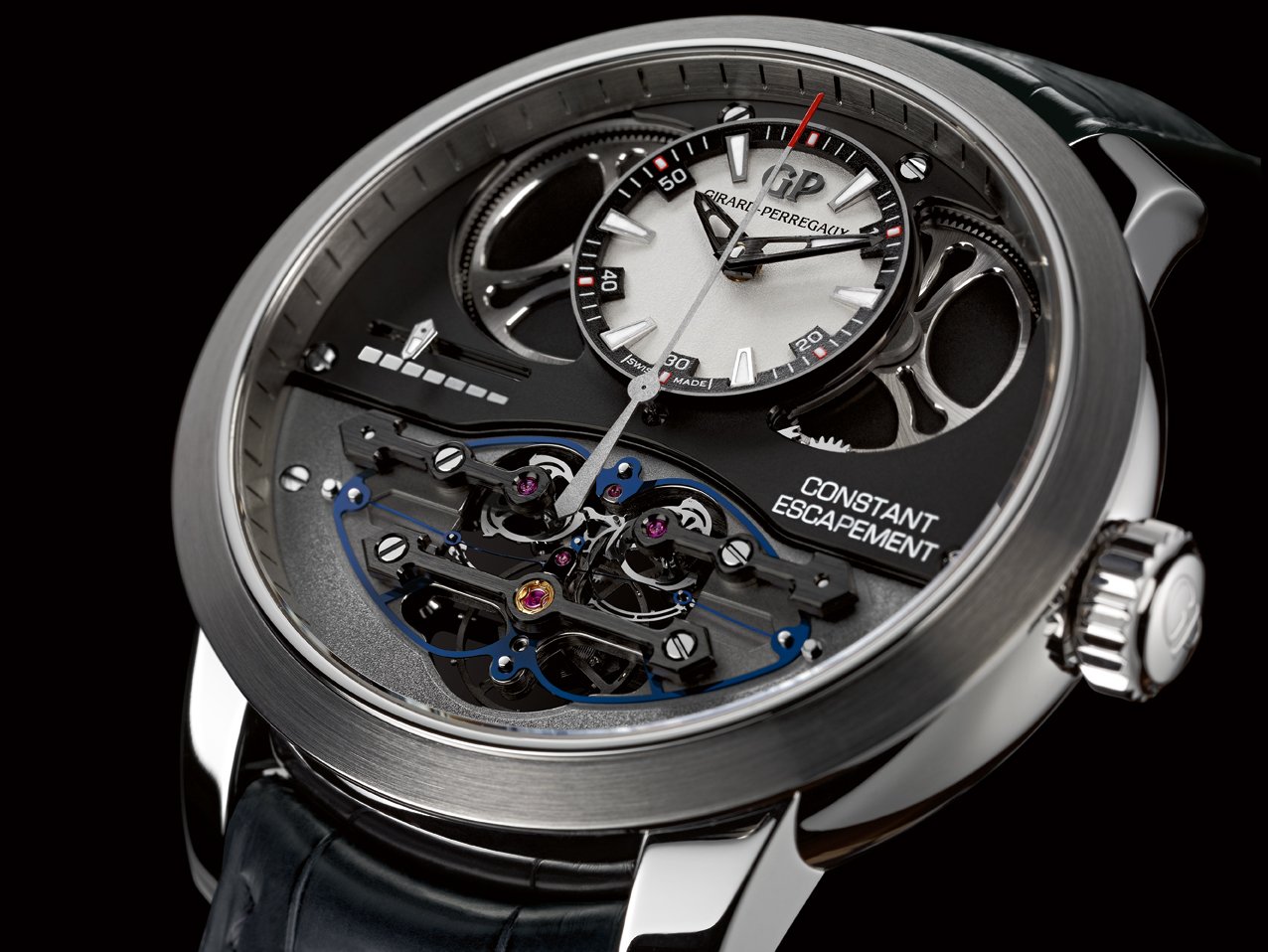
It differs from a remontoire mechanism as the constant force device (the buckled-blade) is part of the escapement itself and gives impulses directly to the oscillator, without intermediary gears. In addition, the constant force is not supplied over a certain period of time but for each snap of the blade, hence each oscillation.
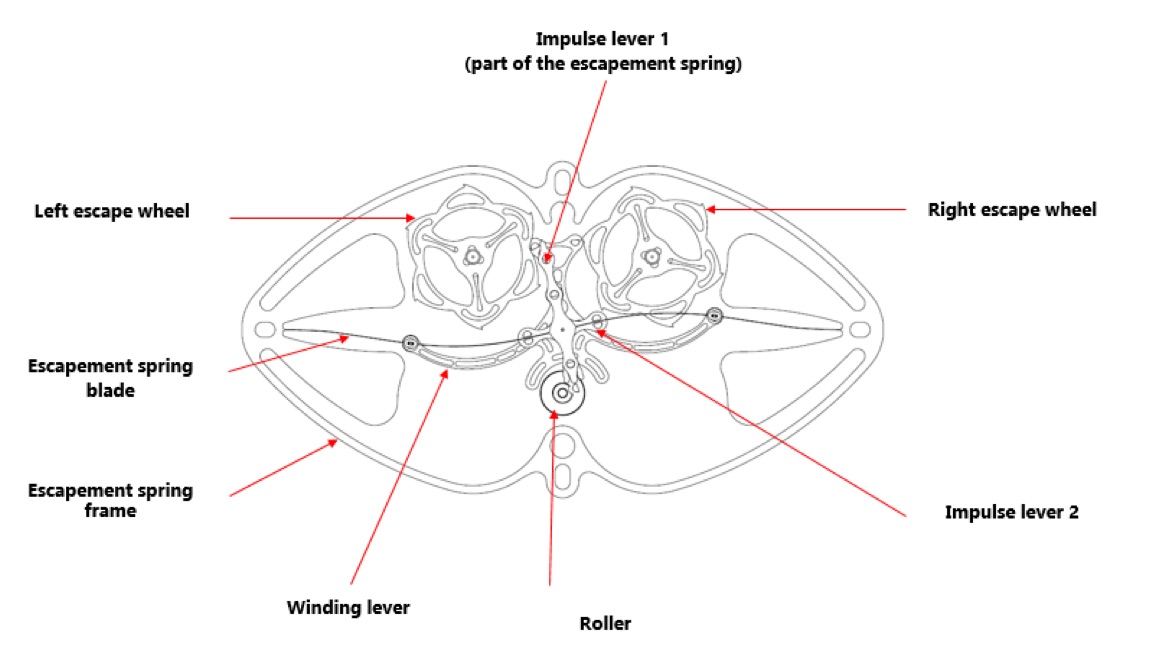
An early version of the Constant escapement and its escapement spring. This single component in mono-crystal silicon features a frame to ensure it is perfectly positioned, a blade subject to buckling constraints and, an impulse lever which pivots coaxially with the winding lever and gives constant impulses to the balance wheel.
Among the recent developments of new escapements, Ulysse Nardin has also taken advantage of the potentialities offered by silicon flat springs to design its Ulysse Anchor Escapement and drive constant impulses to the oscillator.
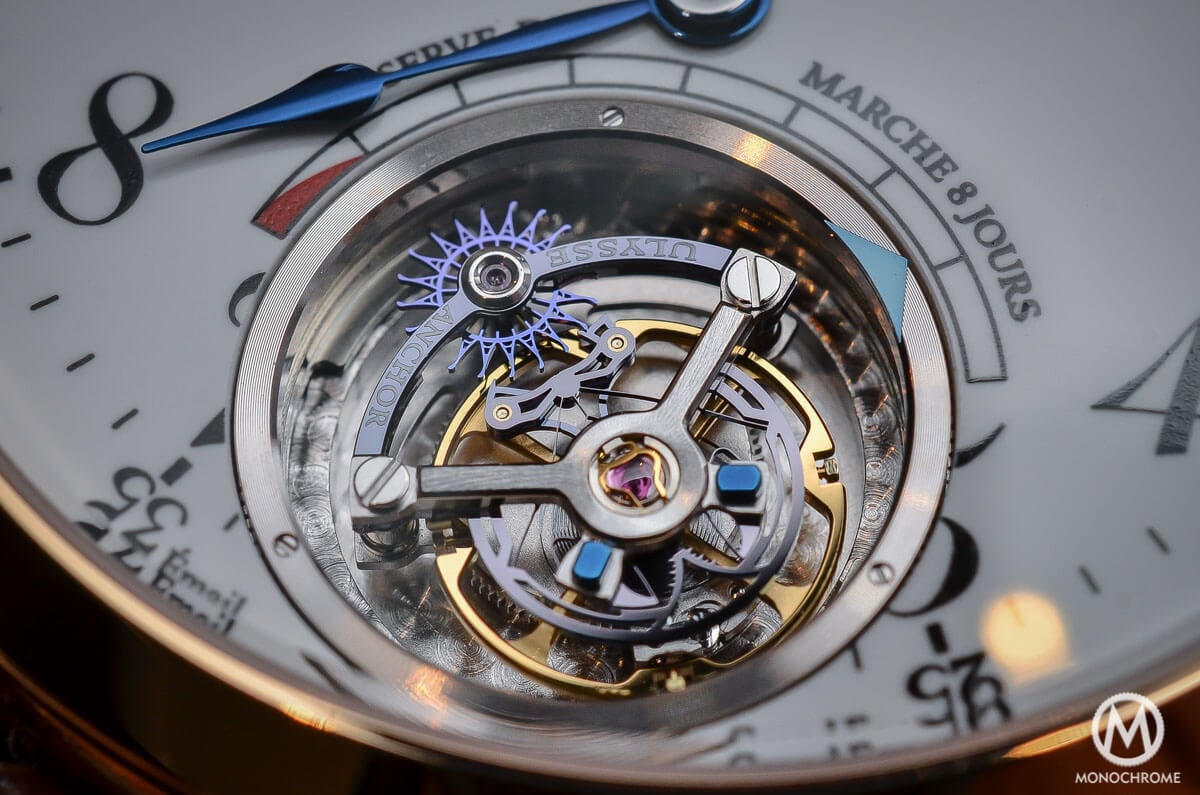
Automatic winding
What if the simplest solution to provide constant power would be automatic winding? Automatic watches are constantly being wound when worn. Their mainspring is designed to slip in the barrel thus preventing over-winding and allowing the watch to operate within its optimal range. To perfect this straightforward system, Richard Mille even developed a concept with a rotor that declutches automatically when the power reserve reaches a sufficient level.
Still, manual winding watches have a unique flair. And after all, as George Daniels explains in his book ‘Watchmaking’, “for general use in modern escapements, the methods of springing and adjusting watches have eliminated the necessity for constant power.” Somehow, the fact that fusées, remontoires or constant-force escapements are not as necessary as they used to be merely adds to their charm.

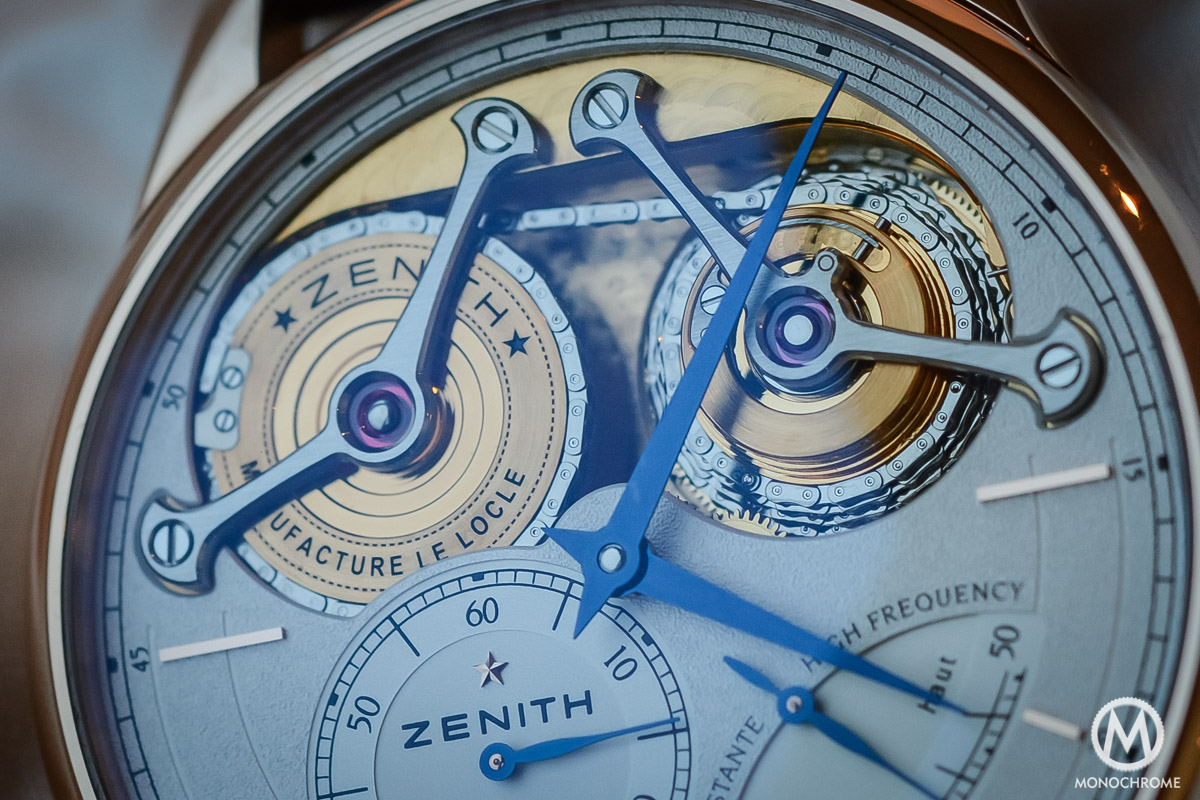
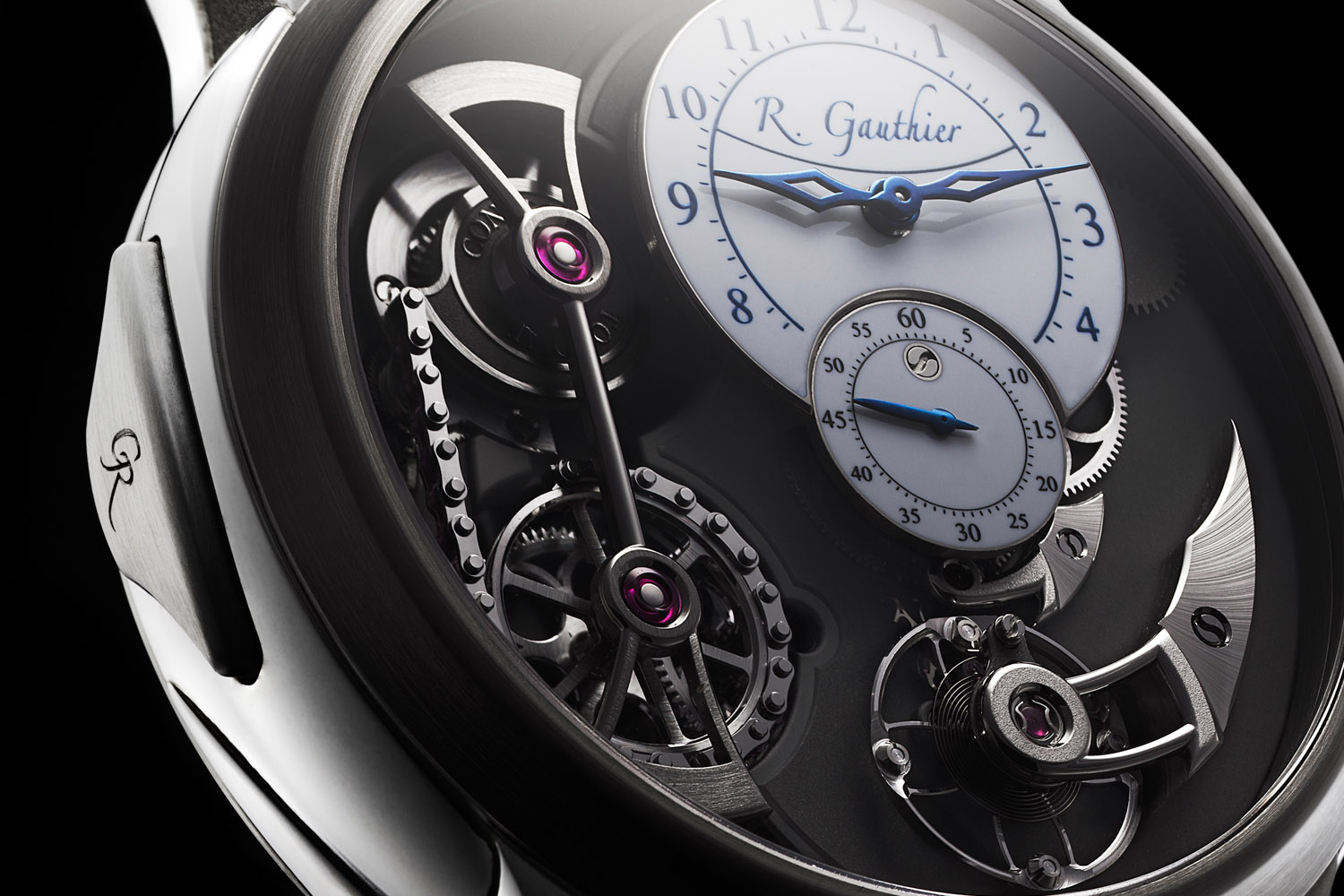
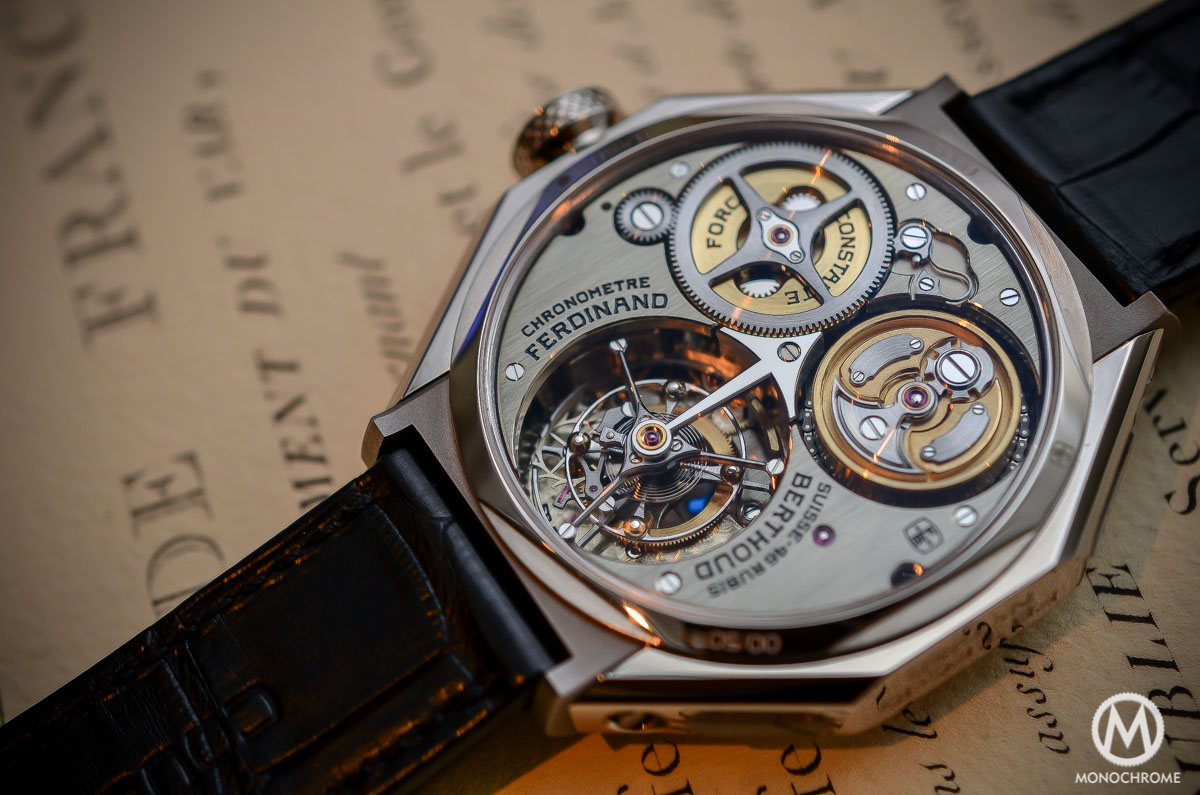
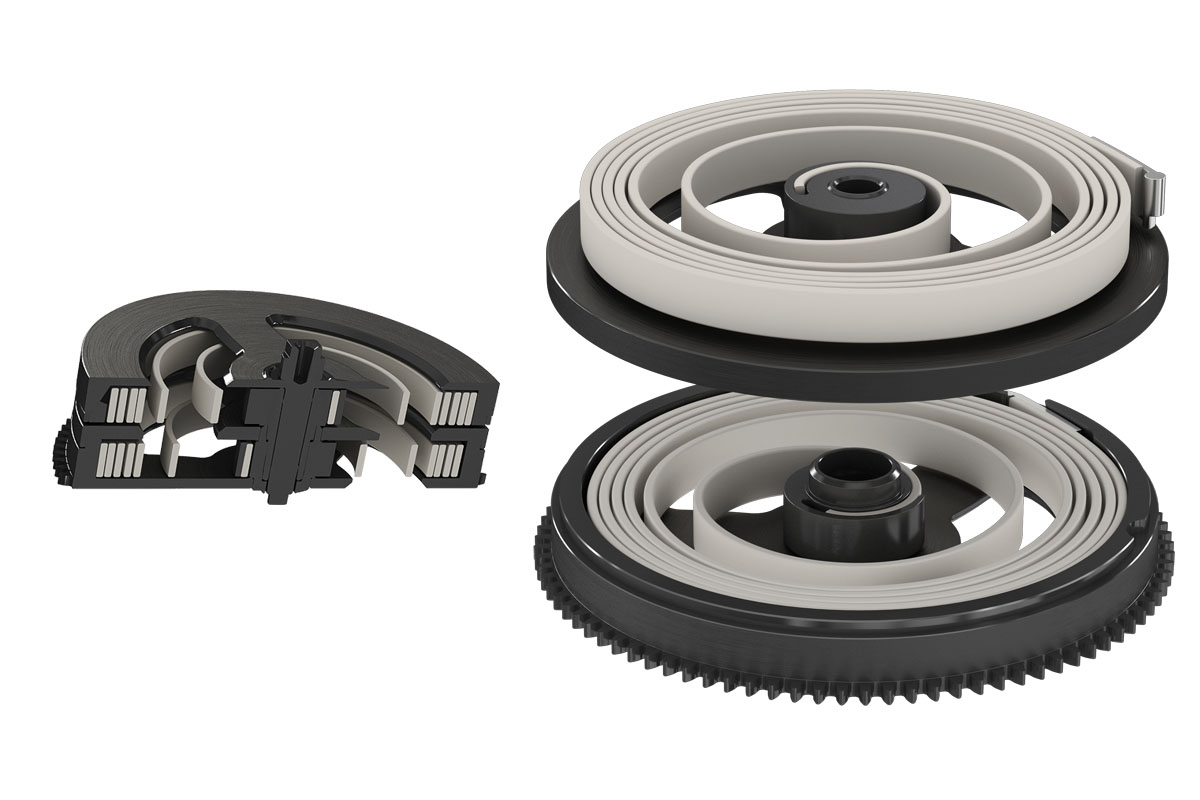
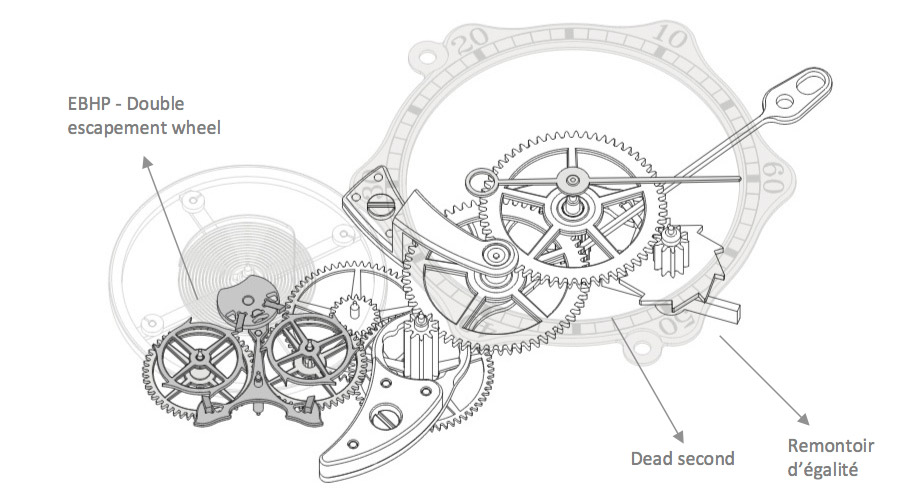


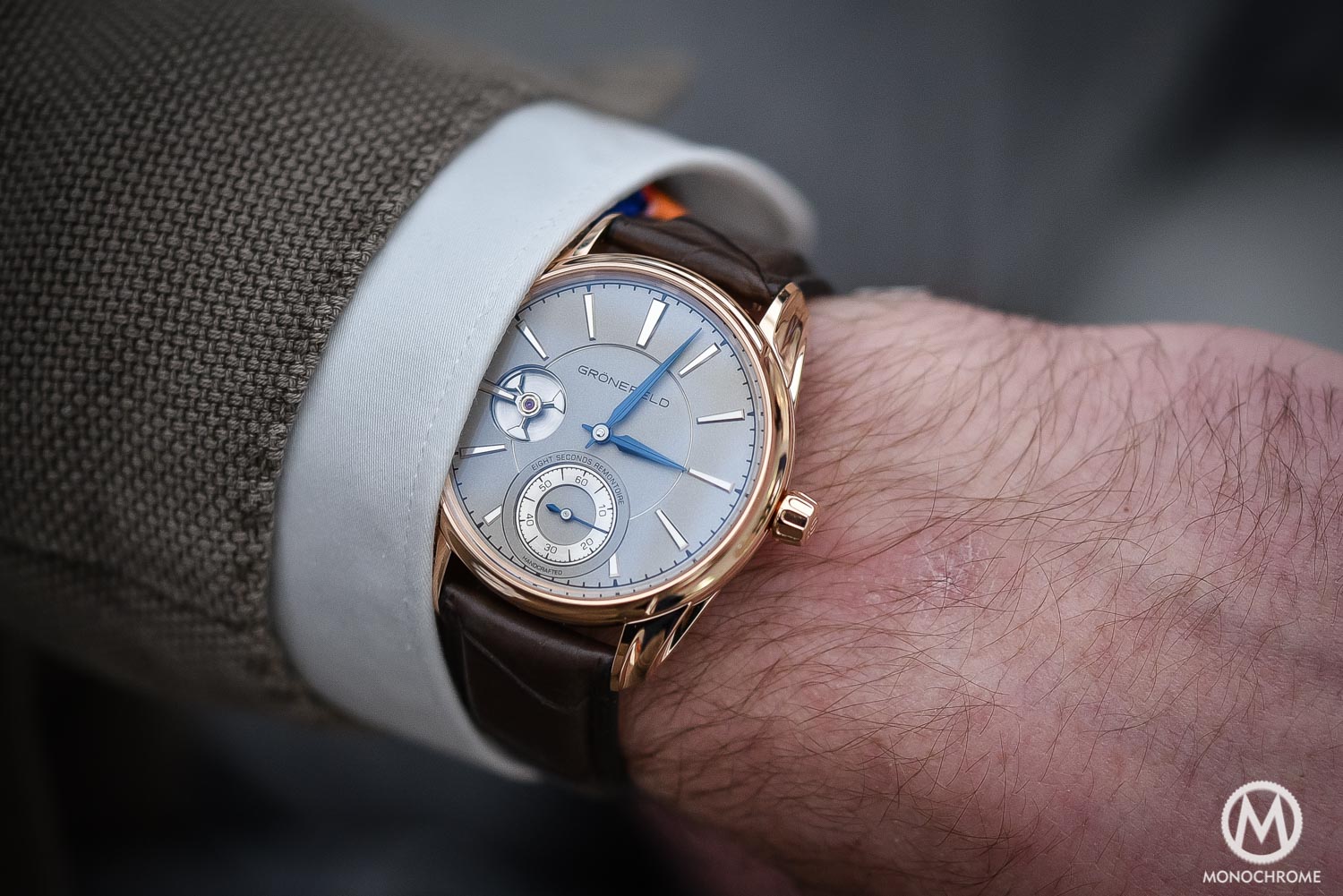



4 responses
“Somehow, the fact that fusées, remontoires or constant-force escapements are not as necessary as they used to be merely adds to their charm.” You got that right. It’s like Rolls and Bentley with their 12 cylinder, double supercharged engines boosting 3 tons zero to 60 in under 5 seconds, when 4 cylinders would get you from here to there.
Just how big can a fusees mechanism be, could it be made to work on a massive scale like for running clock like big Ben in London, England.
Portable clocks and watches are powered by springs (with fluctuations in power), But for massive clocks, weights can provide a more consistent driving force, because their mass and the gravity are constant.
Since this article was written 4 years ago, I bet a follow-up is warranted since there have no doubt been many innovations in this area of watchmaking. Please consider this! It’d be a great read. Thank you.